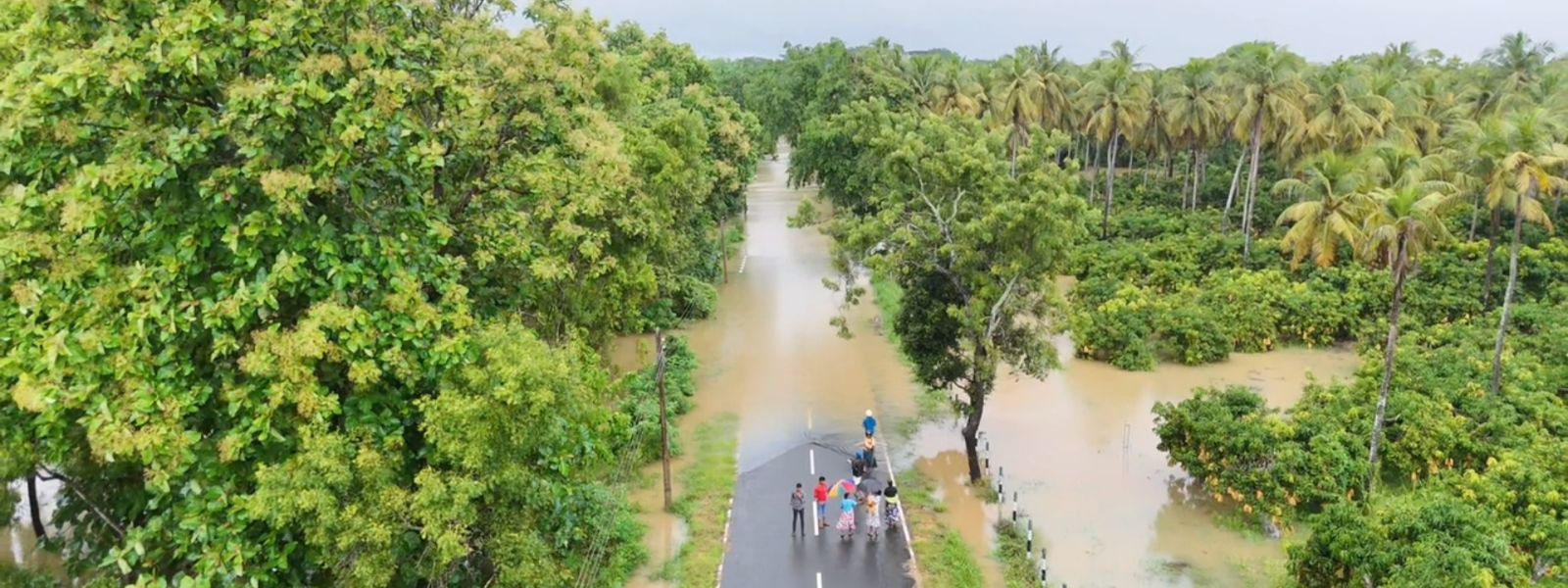.webp)

Catastrophic Cyclone Slams Sri Lanka Killing Over 40, Displacing Thousands
COLOMBO (News 1st); Sri Lanka is in the grip of a historic weather catastrophe as Cyclonic Storm Ditwah tears across the island, leaving a trail of devastation marked by unprecedented flooding, deadly landslides, and widespread destruction.
The storm, which intensified from a deep depression in the Bay of Bengal, is now battering the eastern coastline and moving inland with ferocious winds and relentless rain.
Human Toll Mounts
The Disaster Management Centre (DMC) confirms 40 deaths so far, with 21 people still missing, and warns that the toll could rise as rescue teams struggle to reach isolated communities. Among the victims are five fishermen, underscoring the peril faced by coastal populations.
Badulla district has suffered the worst, recording 23 fatalities, while Kandy has declared a state of emergency after five deaths and two missing persons.
Over 3,500 people from 1,000 families in Kandy are affected, with 37 homes completely destroyed and 99 partially damaged. Nuwara Eliya reports six deaths and four missing, impacting 613 people from 171 families, while Ampara, Kurunegala, Matale, Ratnapura, Galle, Matara, and Colombo are also reeling under severe damage and displacement.
The Department of Meteorology warns that the next 24 hours are critical. Ditwah made landfall near Pottuvil on the eastern coast and is tracking north-northwest, cutting across Batticaloa, Polonnaruwa, and the central highlands including Badulla and Nuwara Eliya, before moving toward Kurunegala and Anuradhapura. This trajectory threatens regions historically vulnerable to flooding and landslides.
Meteorologists caution that continued rainfall over the mountains will trigger massive floods downstream, particularly in the western and southern lowlands, including Ratnapura, Galle, and Matara, and sometimes even the bustling business district of Colombo. Rivers and reservoirs are swelling to dangerous levels, submerging roads and inundating villages.
Authorities have issued red alerts for immediate evacuation in multiple Divisional Secretariat areas across Badulla, Kandy, Kegalle, Kurunegala, Matale, Monaragala, and Nuwara Eliya, citing heightened landslide risks. At least 20 districts are affected, with thousands seeking refuge in temporary shelters.
Transport and power networks are crippled. Railway services have canceled all night mail trains except the Jaffna route, while the Ceylon Electricity Board battles to restore power after 45,000 outages, with nearly 28,000 connections reinstated despite ongoing weather hurdles.
Schools, preschools, and early childhood centers will remain closed nationwide from November 28 until conditions improve.
Ditwah is driving very heavy rainfall exceeding 200 mm in Northern, North-Central, Central, and North-Western provinces, and 150 mm or more in Sabaragamuwa, Western, Badulla, and Batticaloa districts. Winds of 60–70 km/h, gusting up to 80 km/h, are expected across most parts of the island.
President Anura Kumara Dissanayake has announced financial assistance of Rs. 1 million per deceased victim from the Presidential Fund. Relief efforts include distribution of cooked meals, dry rations, and medical aid.
The public is urged to call the 117 emergency hotline and remain vigilant.
Surrounding seas remain treacherous, with waves rising 3–4 meters from Puttalam to Kankasanthurai via Colombo, Galle, Hambantota, Batticaloa, and Trincomalee. Naval and fishing communities have been strictly advised not to venture out until further notice.
Ditwah is shaping up to be one of the most destructive cyclones in Sri Lanka’s recent history, highlighting the growing vulnerability of South Asia to extreme weather events fueled by climate change.
Other Articles
Featured News





.png )
-817345_550x300.jpg)
-817337_550x300.jpg)
-817325_550x300.jpg)

-817313_550x300.jpg)








-812087_550x300.jpg)
-810262_550x300.jpg)
-809496_550x300.jpg)








.webp)






